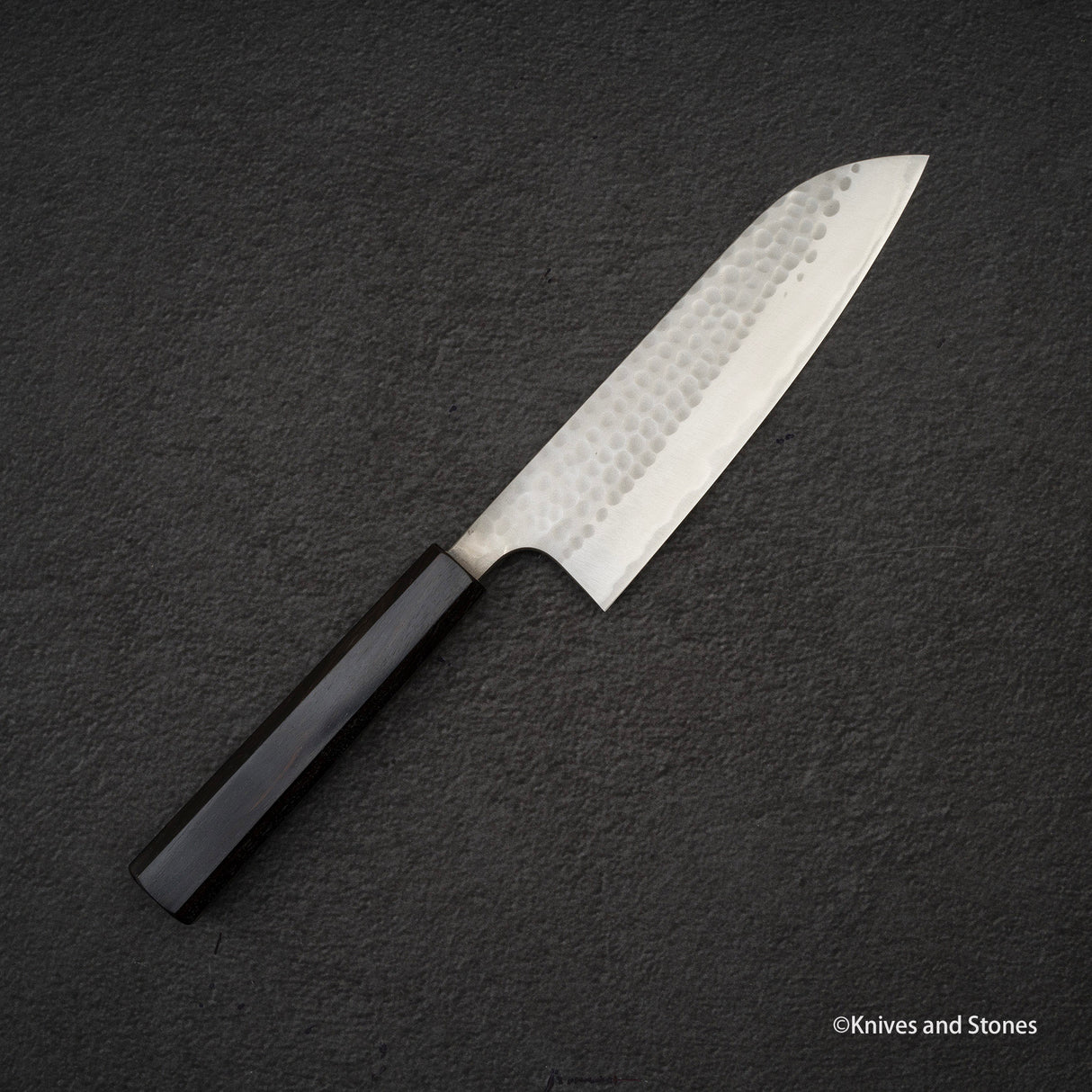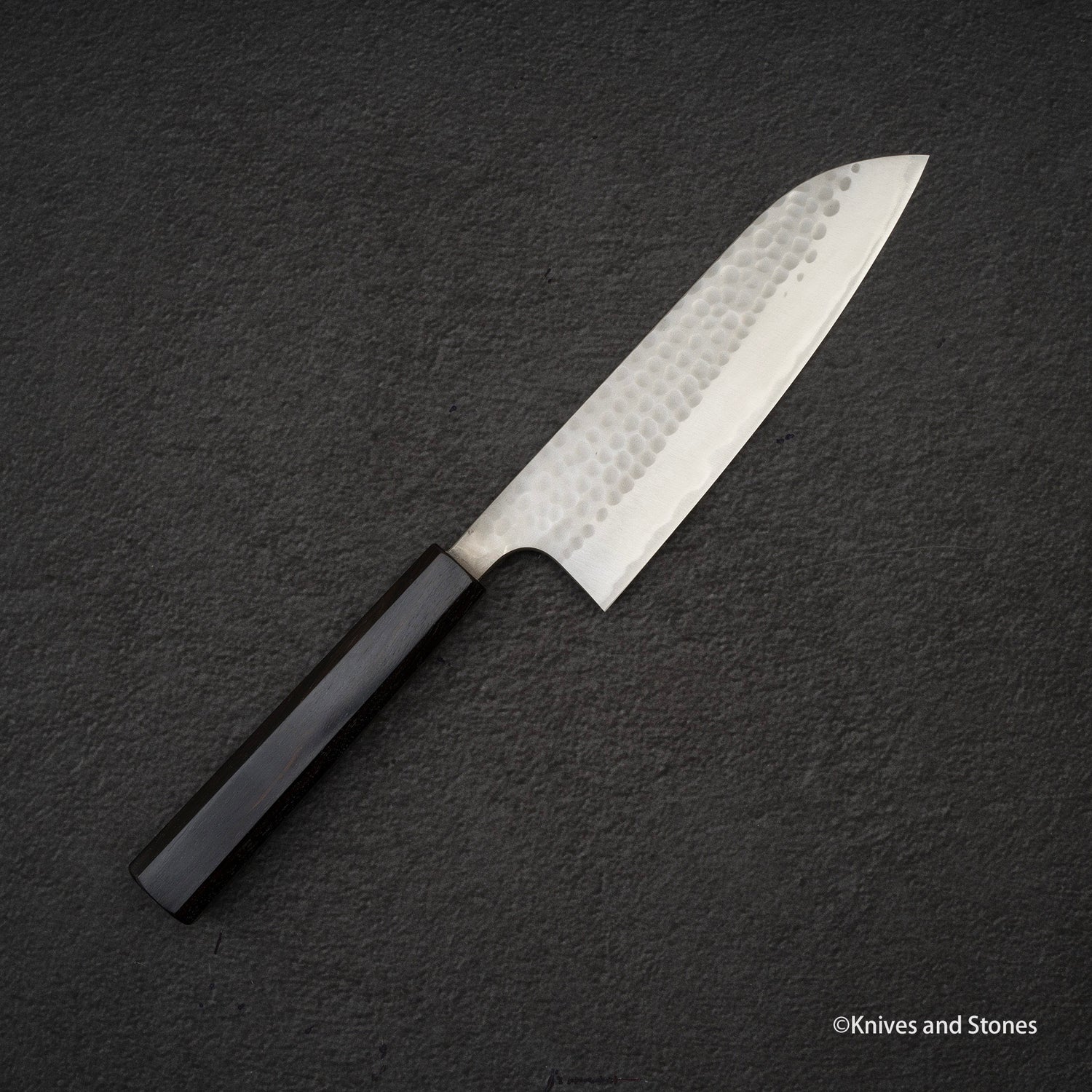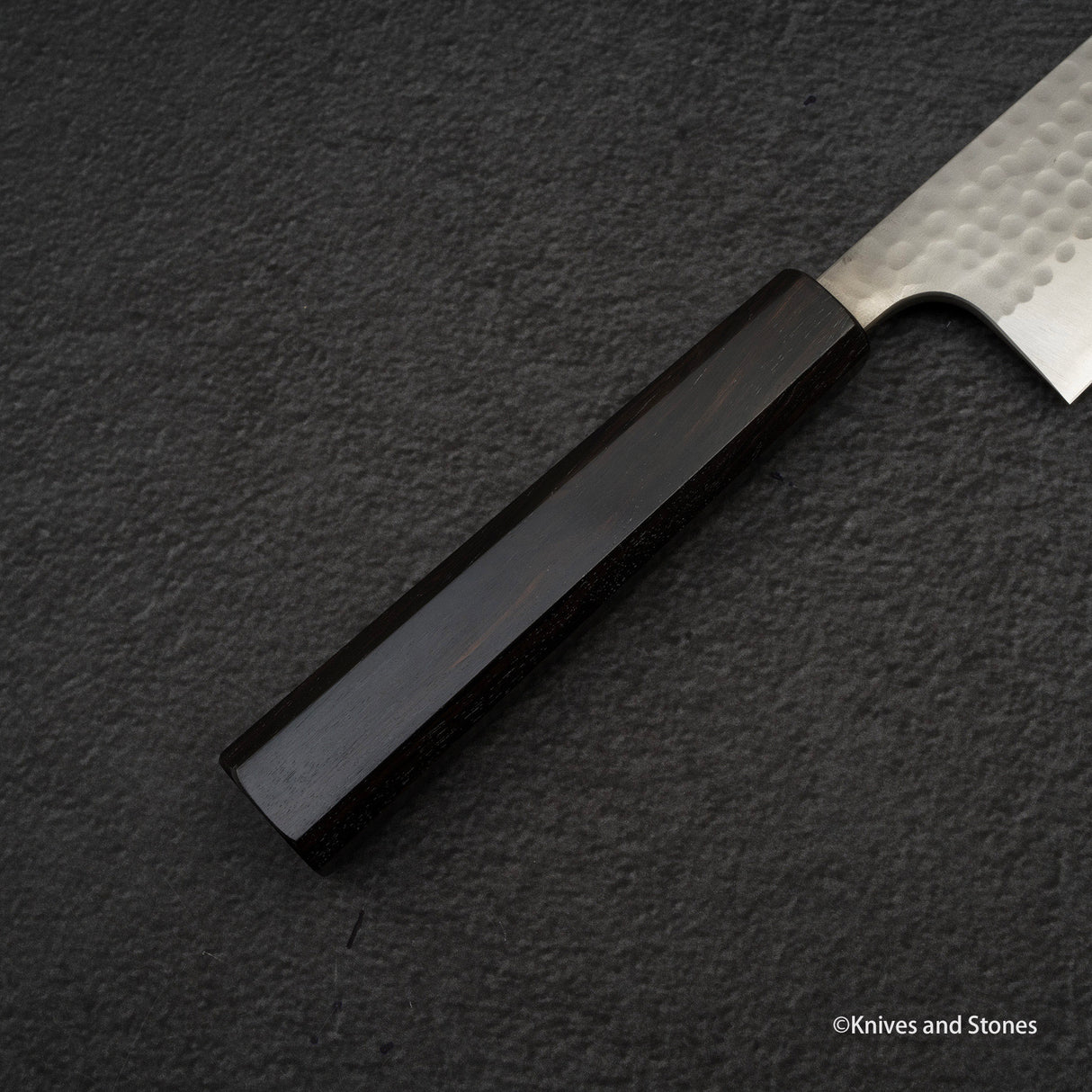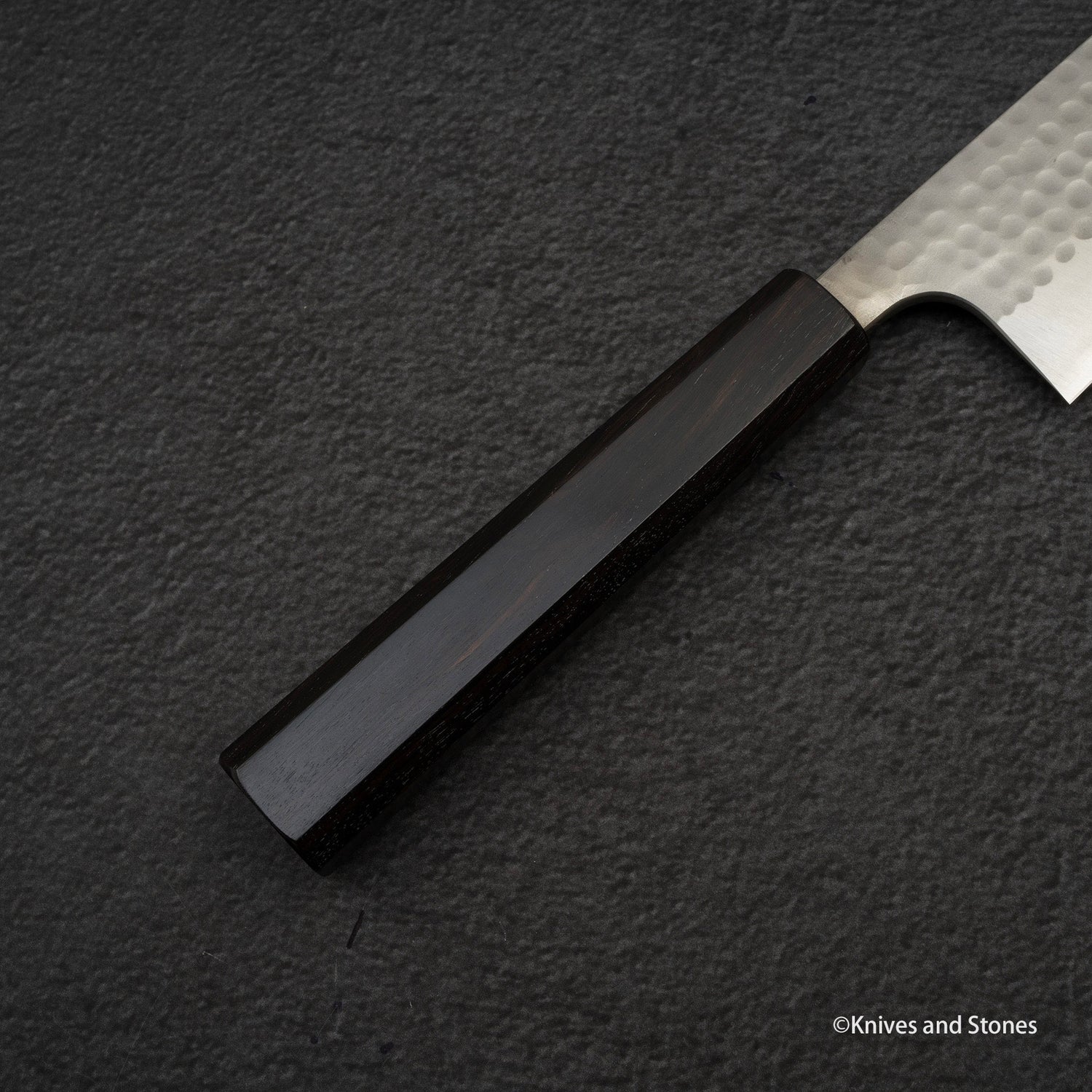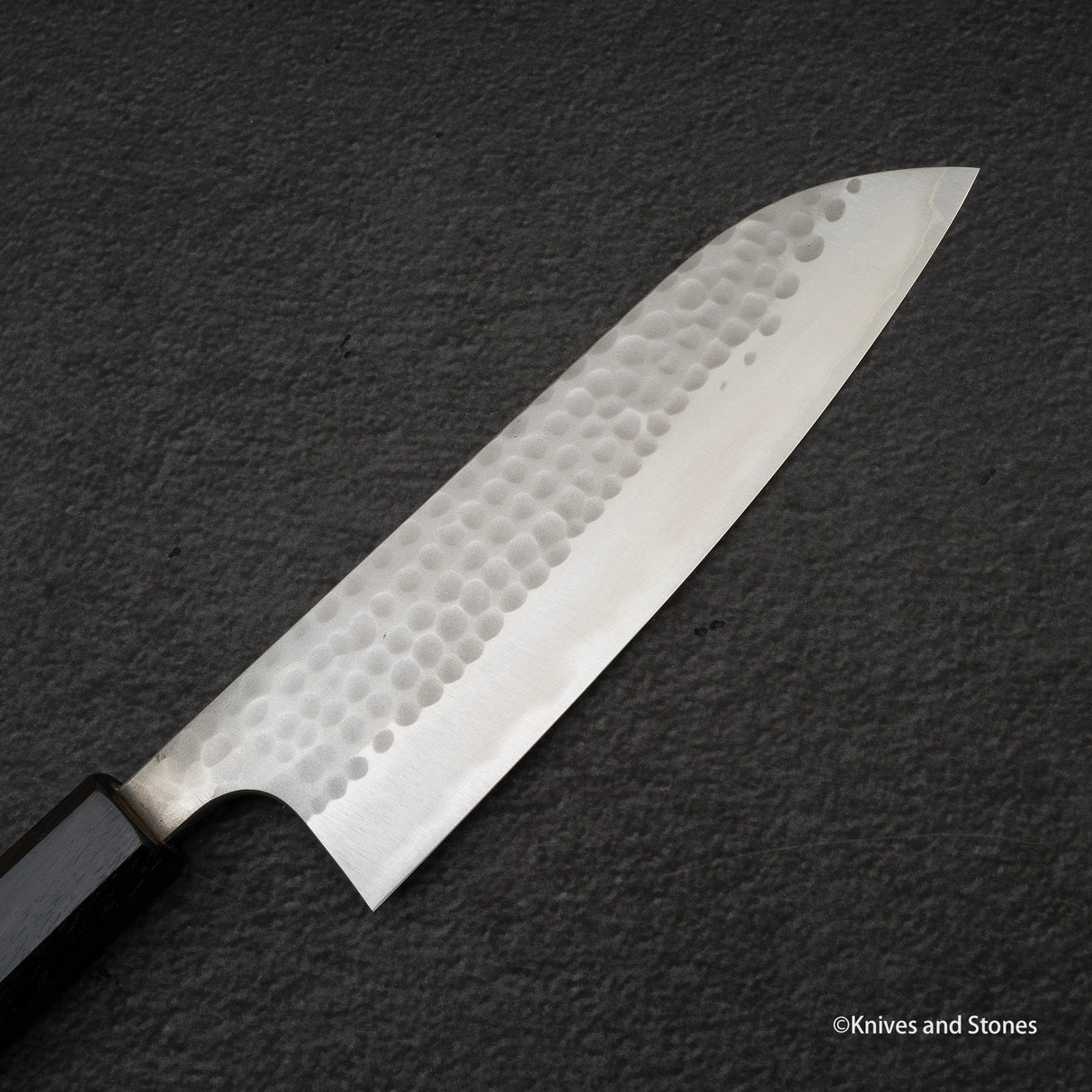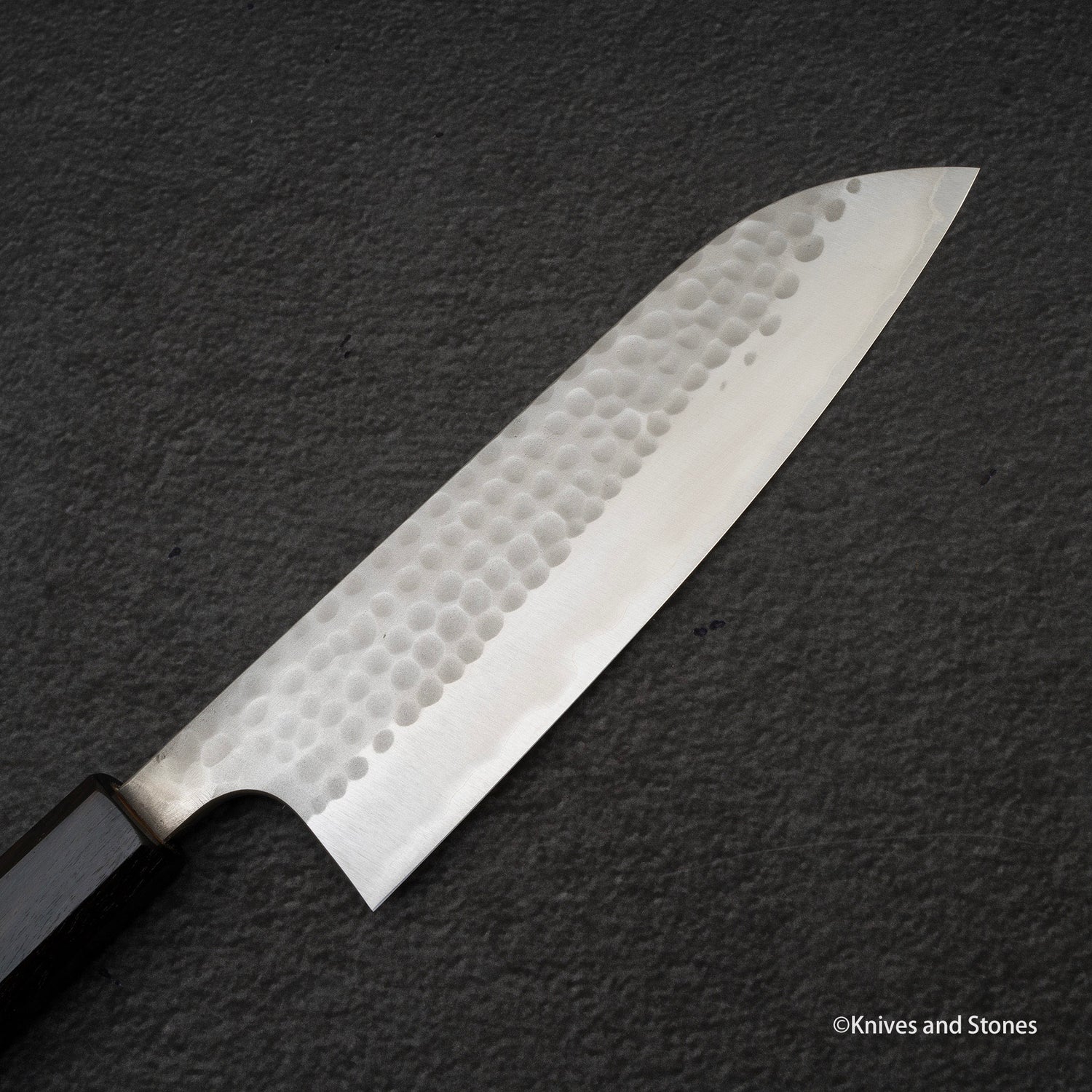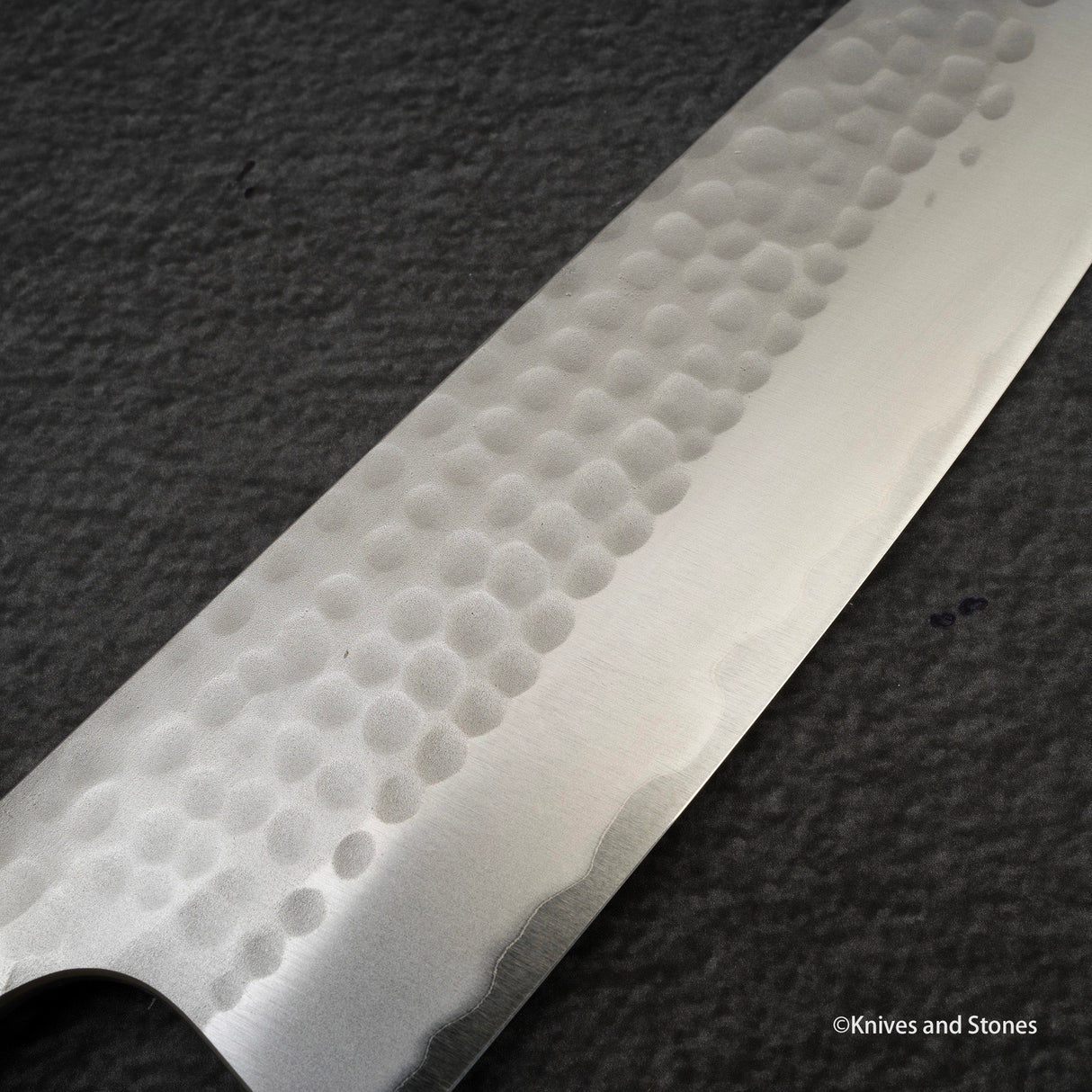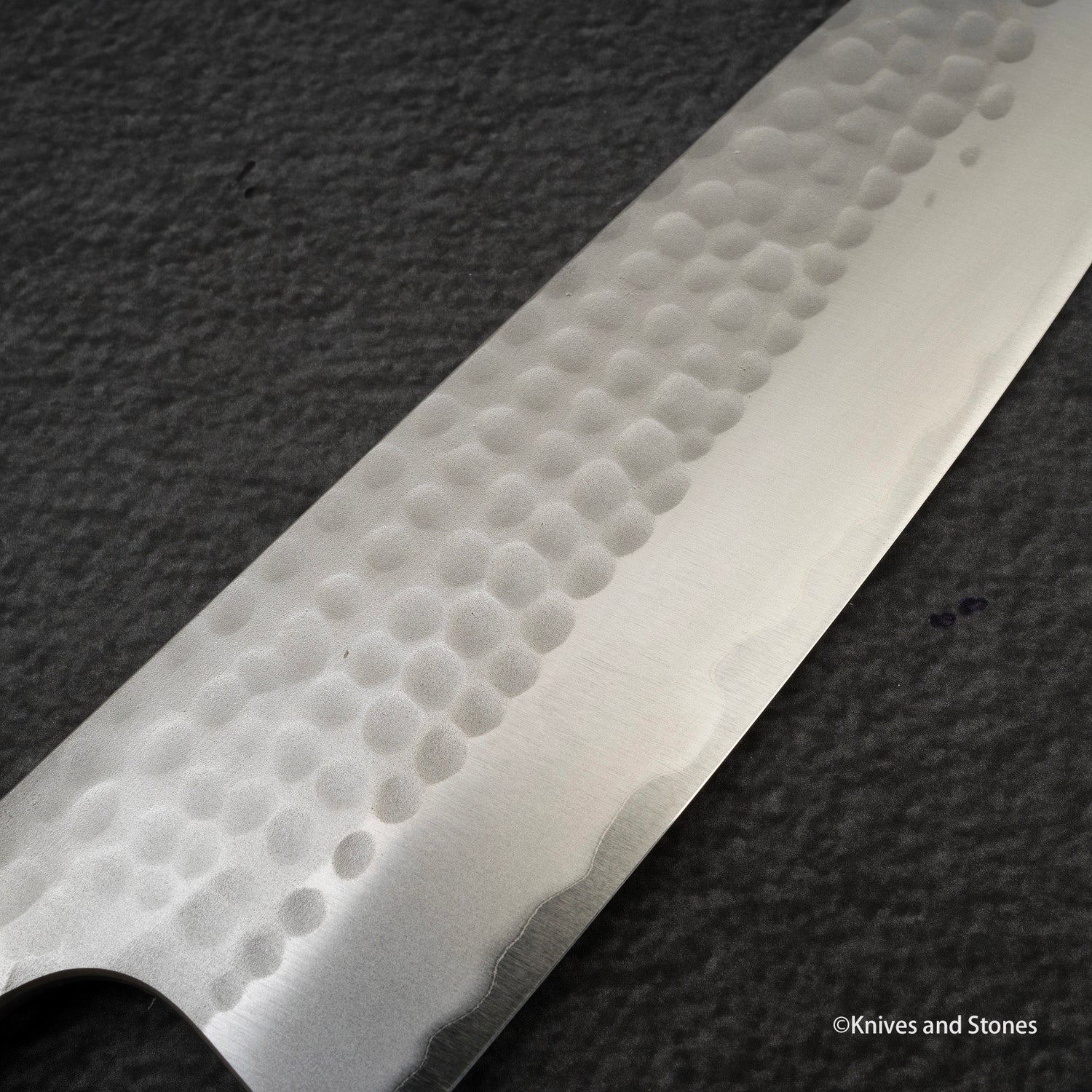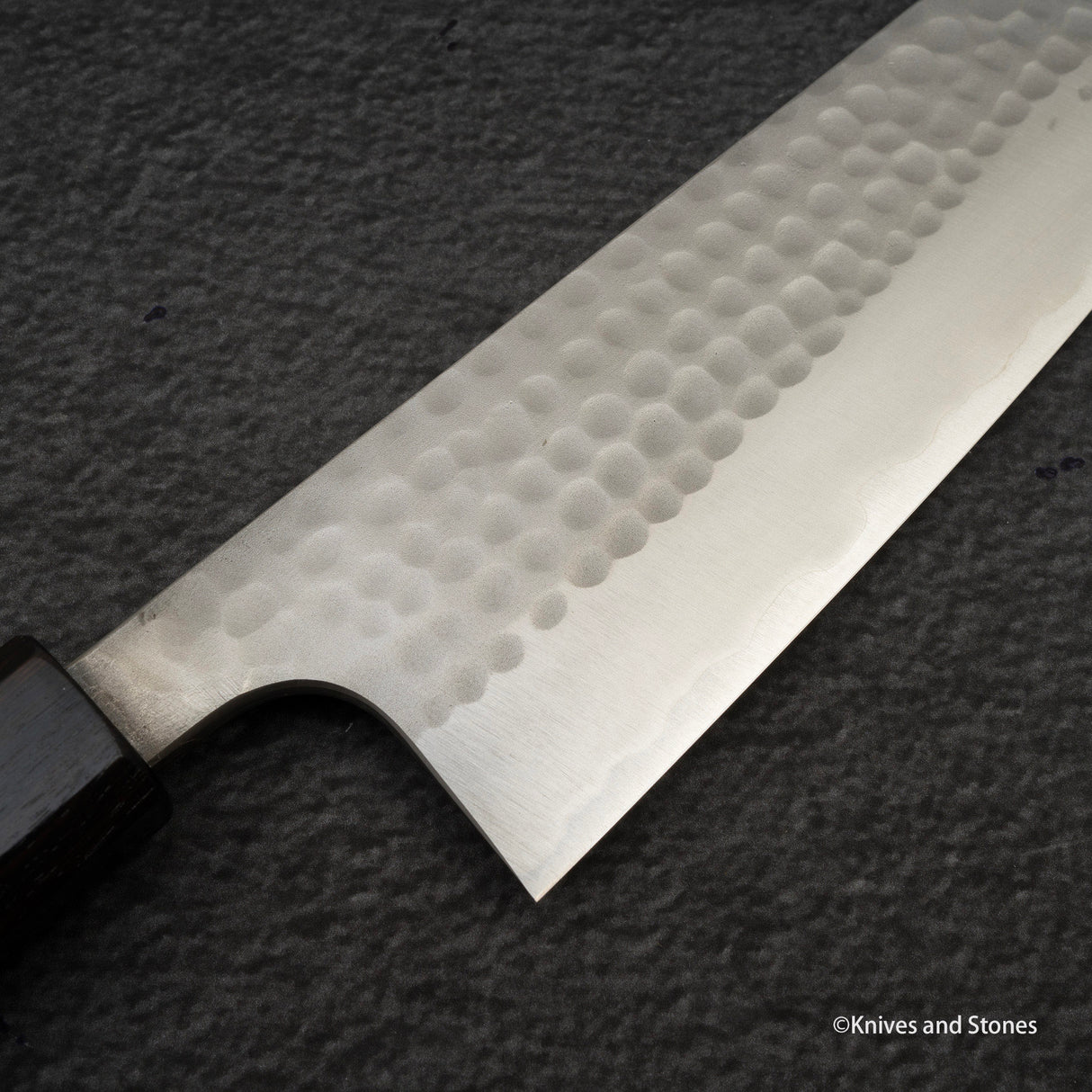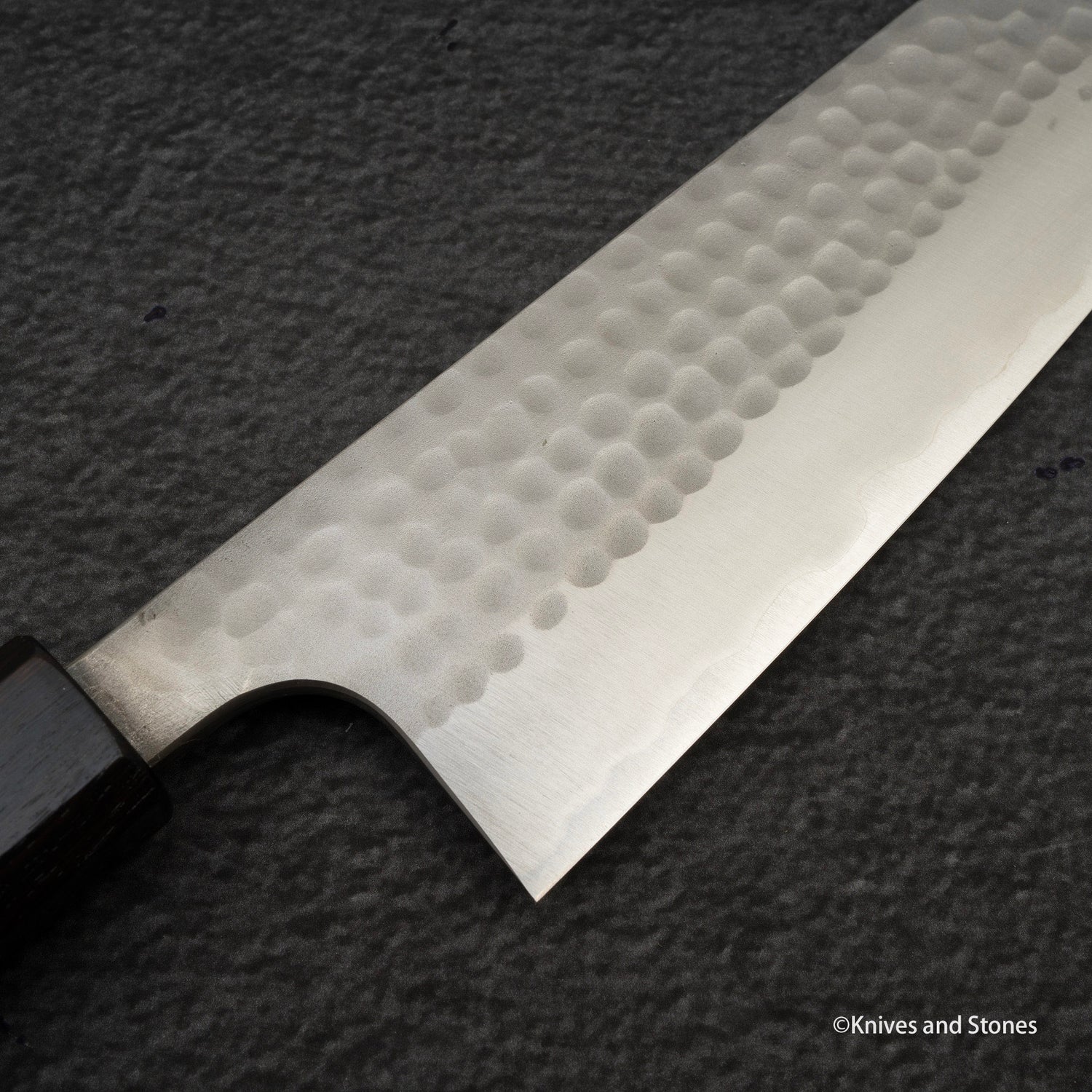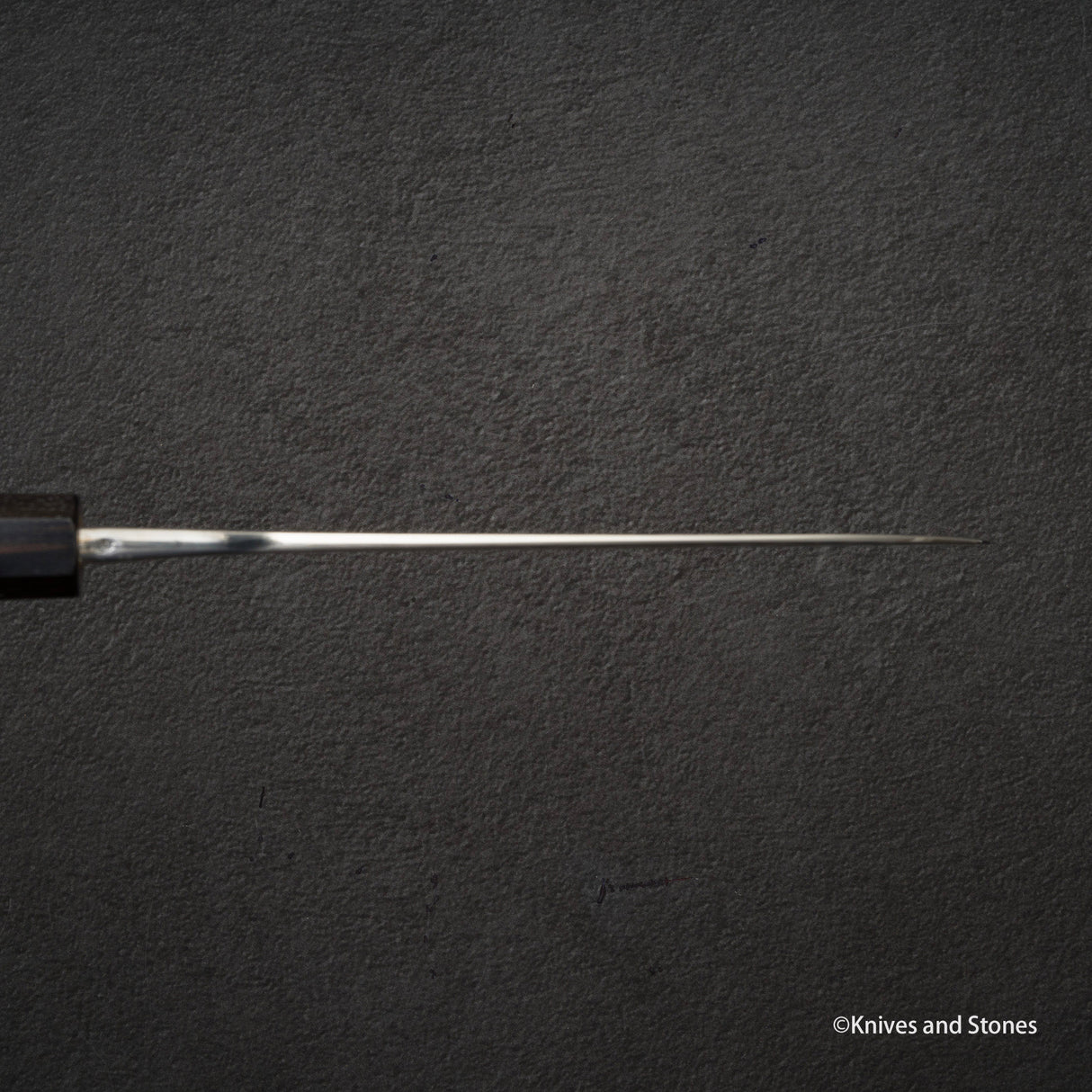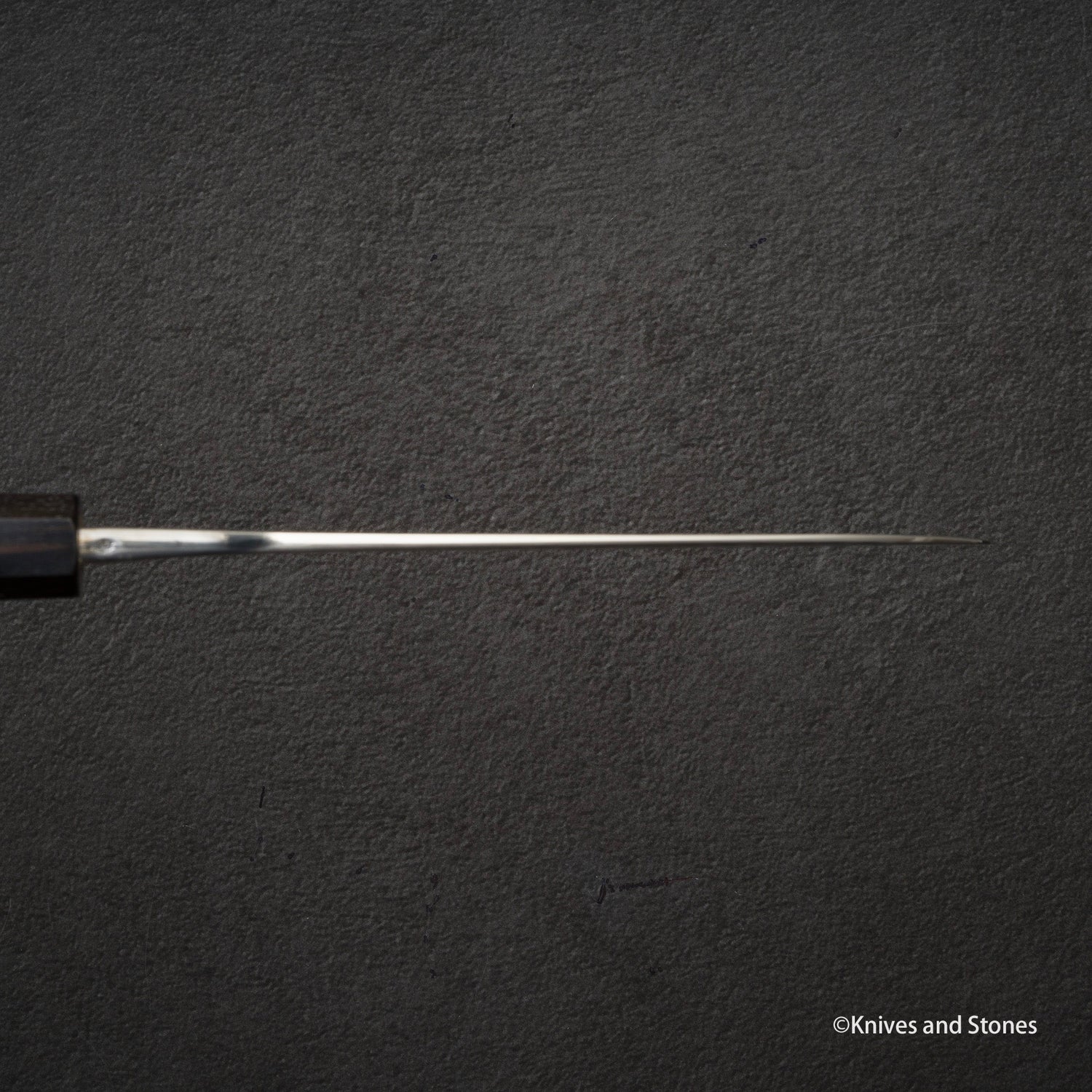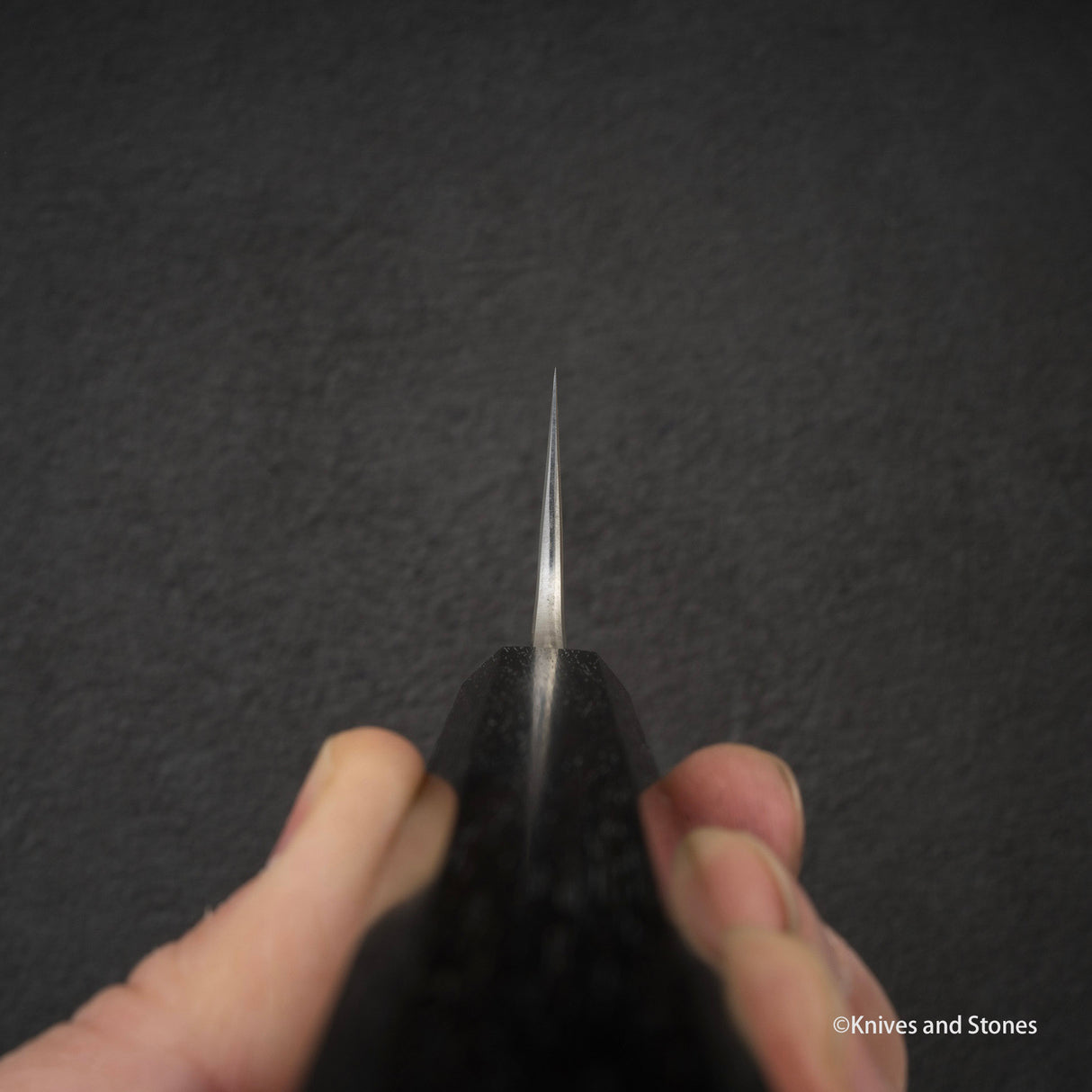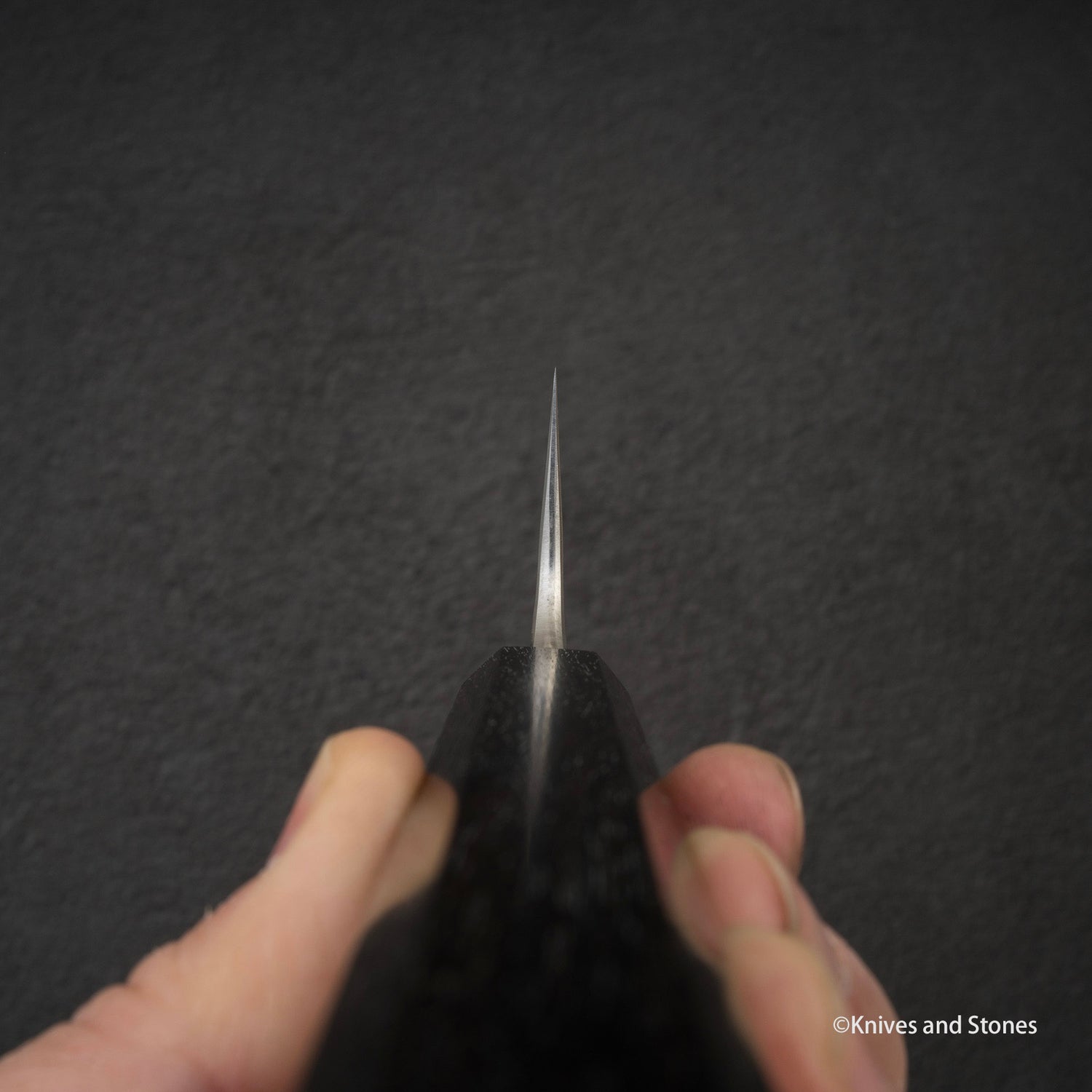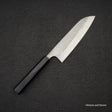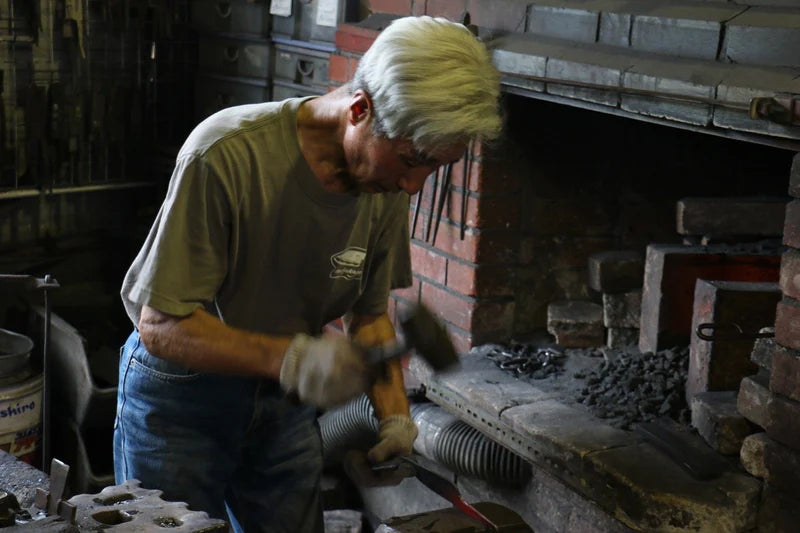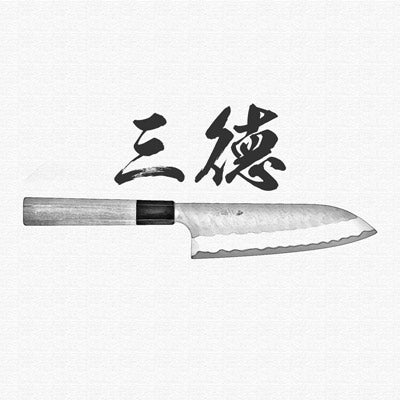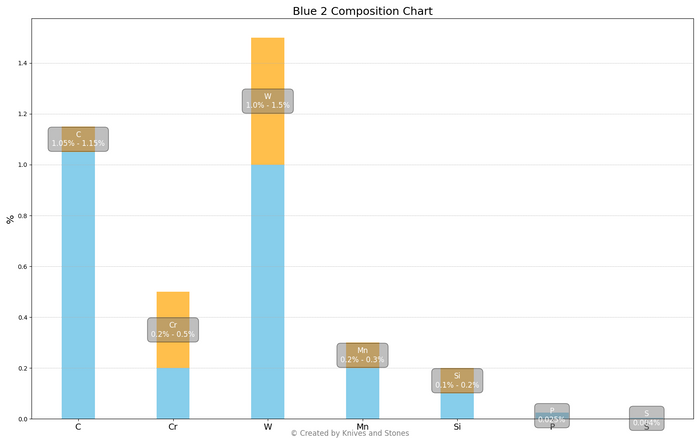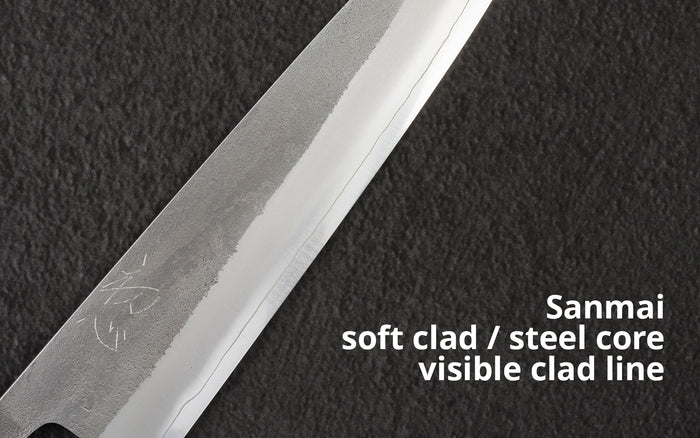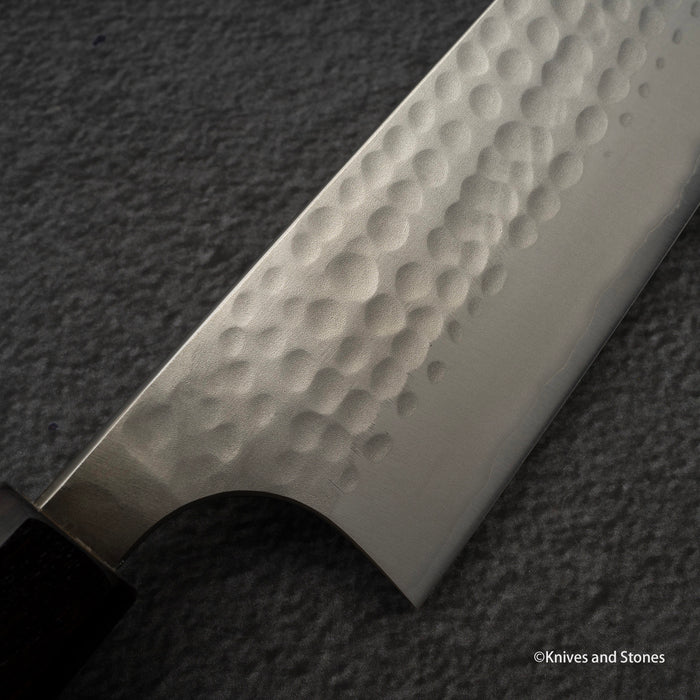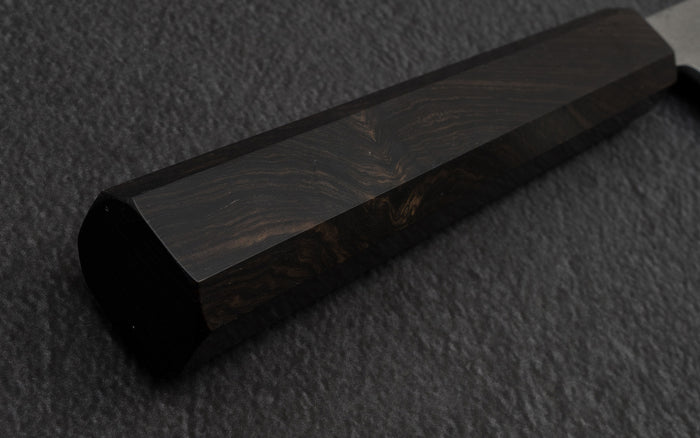Katsushige Anryu Blue 2 Tsuchime Santoku 170mm Stainless Clad Ebony
Katsushige Anryu Blue 2 Tsuchime Santoku 170mm Stainless Clad Ebony is backordered and will ship as soon as it is back in stock.
Couldn't load pickup availability
K&S Price: AU $299.95* inc. tax , vs:
| Store BF | AU $302.0 | -1.0% |
* For overseas buyers you pay no GST (10%) and low shipping rate.
Last Update: 2025-04-22T17:05:31Z
Detailed Specifications
| Line | Anryu Blue 2 Tsuchime Stainless Clad |
| Profile | Santoku |
| Bevel Type | Double Bevel |
| Weight | 173 g 6.1 oz |
| Edge Length | 175 mm .6.89 inch |
| Heel Height | 48 mm .1.89 inch |
| Width @ Spine | 4.6 mm 0.18 inch |
| Width @ Mid | 2.3 mm 0.09 inch |
| Width @ 1cm from Tip | 0.7 mm 0.03 inch |
| Steel | Blue 2 / Aogami #2 | Carbon |
| Blade Construction | Sanmai - Stainless Clad |
| Hardness (HRC) | 61 - 63 |
| Surface Finish | Tsuchime |
| Handle | Octagonal Ebony |
| Region | Echizen |
| Best for |
|

| Pros | Cons |
|
|
|
Care Instruction
- Don't cut hard things! Japanese knives are brittle so bone hacking is a NO NO!
- Wash with neutral detergent after use, and wipe dry;
- Please don't wash knife with dishwasher, it will damage the wood handle;
- Be careful not to leave the knife close to a heat source for a long time;
- It is a lot more dangerous to cut with a blunt knife than a sharp knife!
- It is best to sharpen a Japanese knife regularly on a waterstone.
- Oil the (carbon) knife if storing for an extended period of time to prevent rust.

